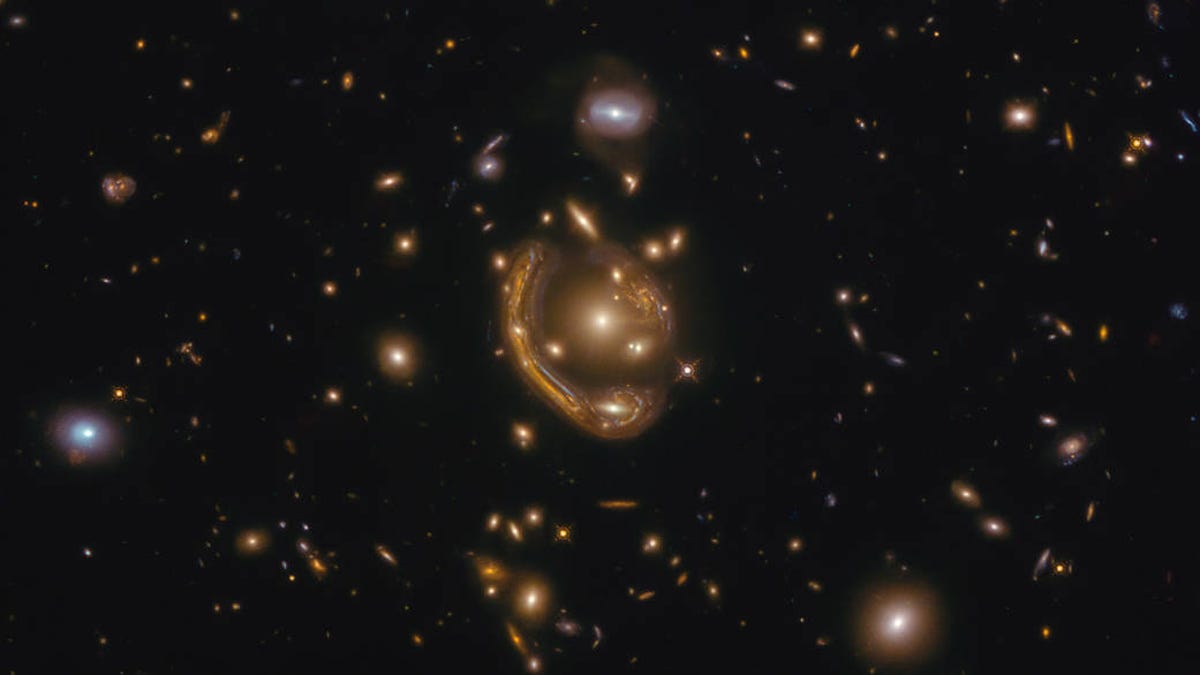Gorgeous 'molten ring' galaxy spotted by Hubble reveals ancient star factory
This cosmic optical illusion was first predicted by Albert Einstein.

This image, taken with the NASA/ESA Hubble Space Telescope, depicts GAL-CLUS-022058s, located in the southern hemisphere constellation of Fornax (the Furnace). GAL-CLUS-022058s is the largest and one of the most complete Einstein rings ever discovered in our universe.
The object GAL-CLUS-022058s in the constellation Fornax the Furnace is far more elegant and intriguing than its name would seem to indicate. It's the largest and among the most complete examples of an Einstein ring ever spotted in the universe.
Now, since the original release of this image in 2020, scientists have determined it's also a window into a primordial period of the early universe when new stars were forming rapidly in the area, as if a cosmic assembly line were in operation.
An Einstein ring is an example of an optical phenomenon first theorized by Albert Einstein called gravitational lensing. The basic idea is that light from a far-off object in deep space is warped by the gravity of an object that lies in between the distant object and the observer.
Here, the light from the background galaxy is not only distorted, but also magnified by a factor of 20. This allows astronomers to get a better look at the galaxy than could be provided by currently available technology alone. In fact, the effect is the equivalent of looking through a telescope with a 157-foot (48 meter) wide aperture.
NASA breaks down exactly what we're seeing in the image in this video:
Astronomers analyzed the image and created a model that precisely determined the effects of the gravitational warping on what they were looking at.
"Such a model could only be obtained with the Hubble imaging," lead investigator Anastasio Díaz-Sánchez of Spain's Universidad Politecnica de Cartagena explained in a statement. "In particular, Hubble helped us to identify the four duplicated images and the stellar clumps of the lensed galaxy."
The analysis allowed the team to determine that the background galaxy is 9.4 billion light-years from Earth, which puts it in an area of space and time where peak star formation was happening at a rate a thousand times faster than what we see in the Milky Way.
This insight could help scientists explain why there seems to be a buildup of giant elliptical galaxies in the universe as we see it today. Plus, it's fun to discover what is essentially one of the biggest natural funhouse mirrors in the universe.

